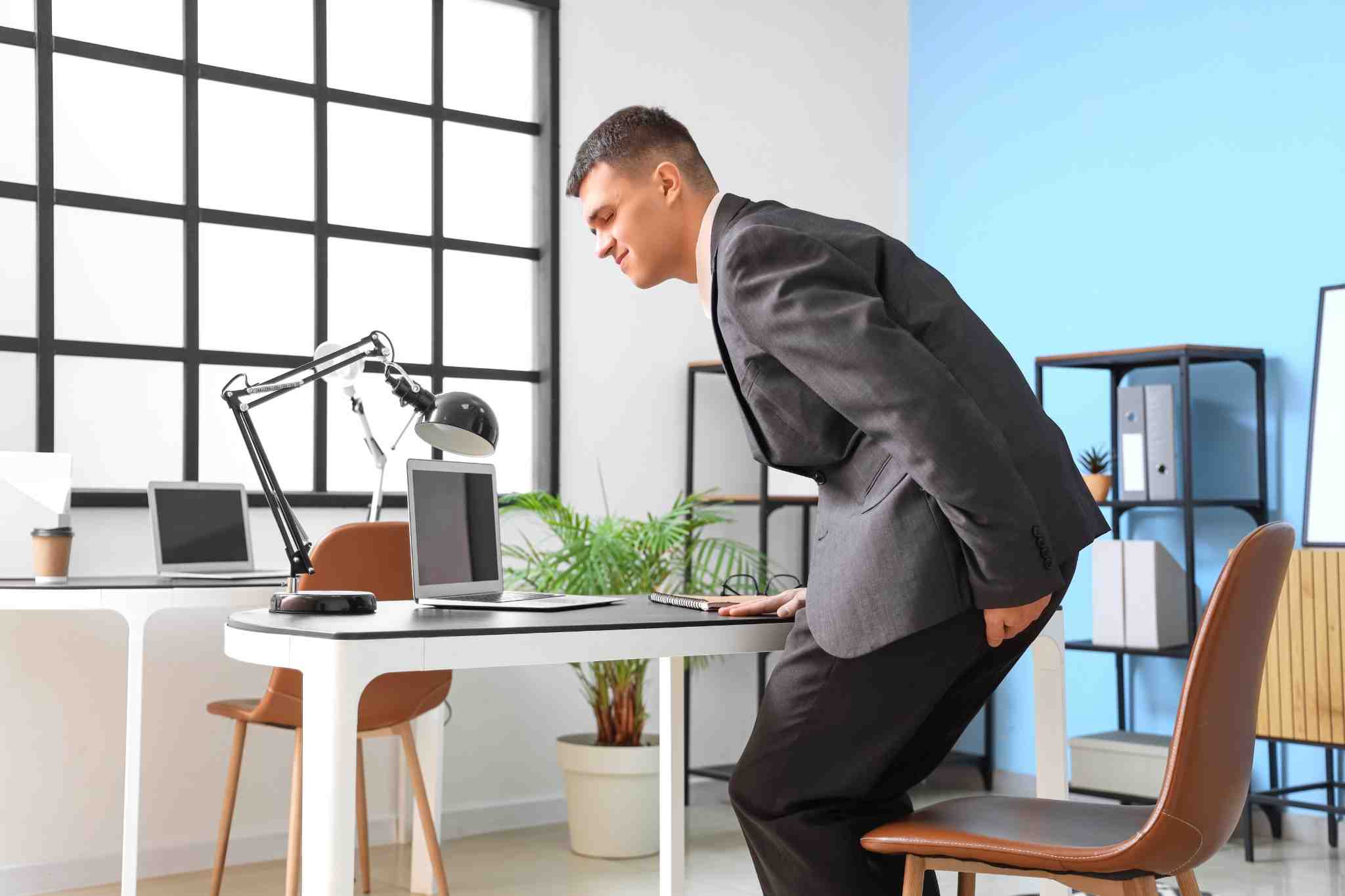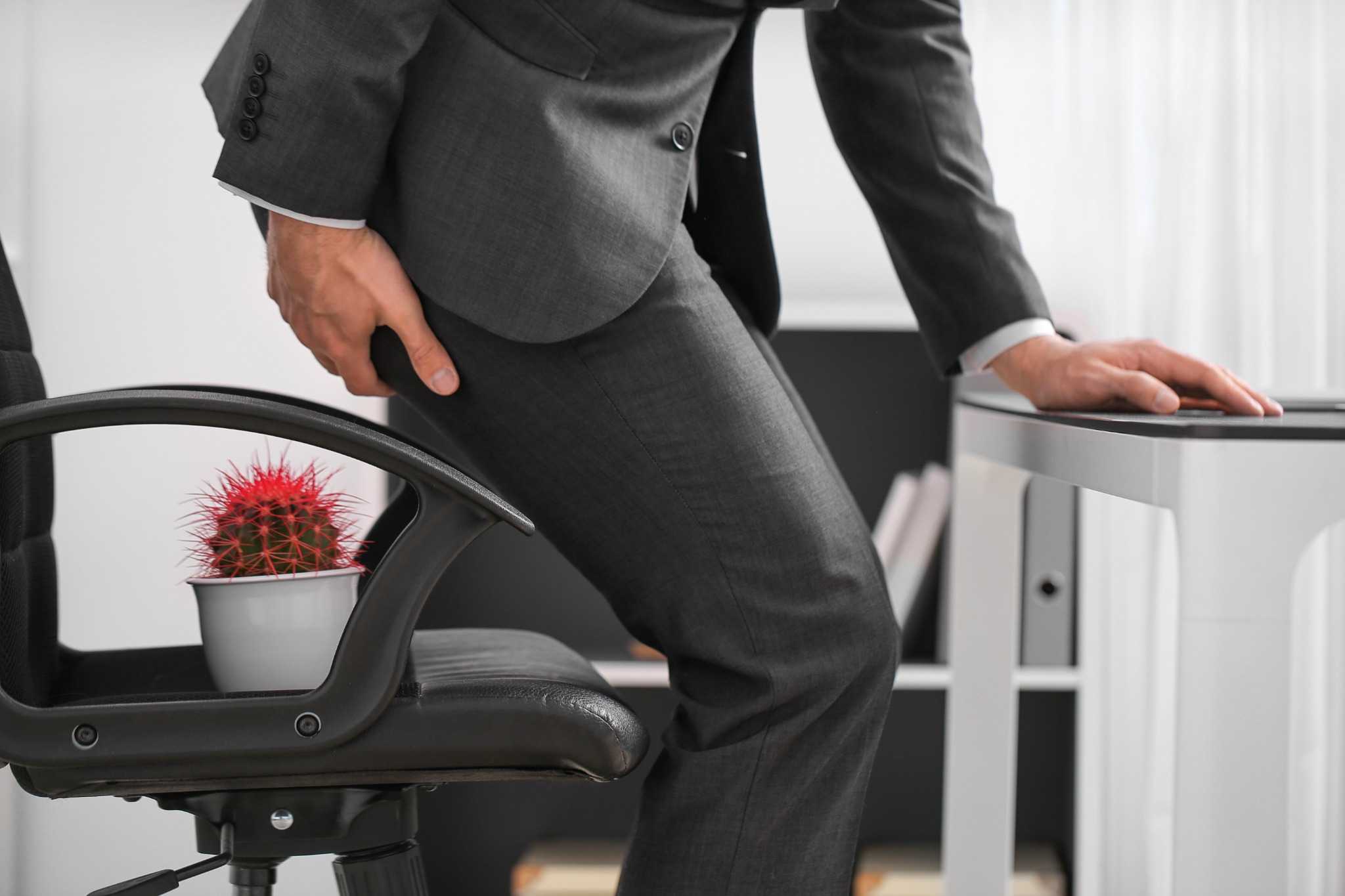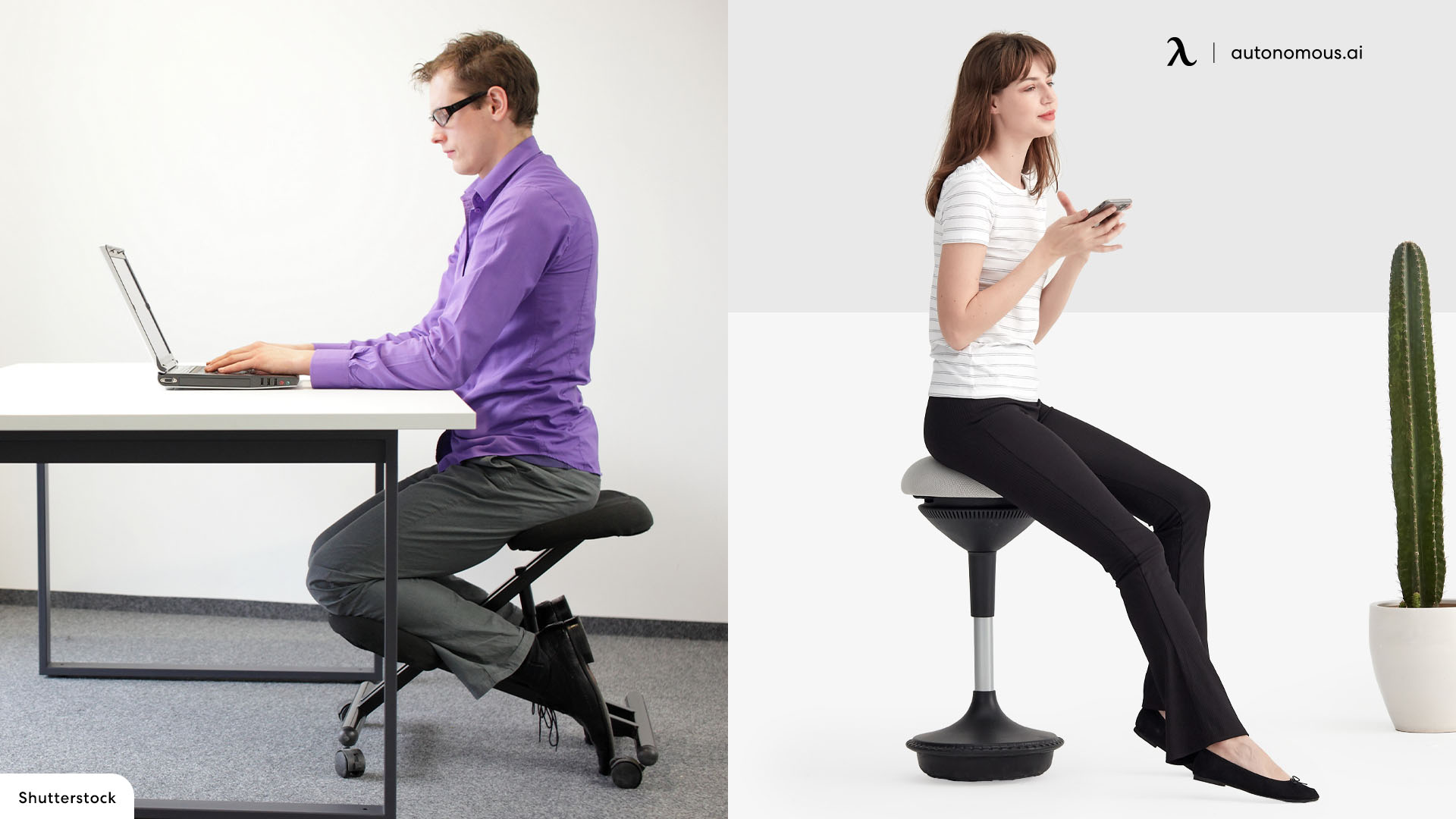Office Chair Butt - Keeping Your Body Active And Well
Many of us spend a lot of time sitting, perhaps more than we realize, and it's almost a given that our bodies feel it. This constant sitting, especially in an office chair, can bring about some noticeable changes to our bodies, like what some folks call "office chair butt." It's a real concern for many who work at desks, you know, and it's something worth thinking about if you want to stay feeling good.
The good news is that there are ways to help keep your body moving and feeling comfortable, even if your job means a lot of time in a seat. We're going to talk about how you can prevent this "office chair butt" effect and make sure your time at a desk doesn't make your body unhappy. You see, with just a little bit of thought and some simple adjustments, you can make a big difference for your physical comfort and well-being.
It turns out that sitting for long periods, in a way, can have a real impact on your body, particularly on your lower back and the muscles in your backside. But with some thoughtful approaches, you can actually keep your body active and engaged, feeling comfortable even during a workday where you spend a lot of time sitting down. We will look at some ideas that can help make sure your desk work doesn't compromise how your body feels.
Table of Contents
- What Exactly is "Office Chair Butt"?
- Why Does Prolonged Sitting Affect Your Glutes and Lower Back?
- Meeting the Experts - Alissa Mosca and Jonathan Puleio
- Alissa Mosca - Fitness Trainer Insights on "Office Chair Butt"
- Jonathan Puleio - Ergonomist's View on "Office Chair Butt"
- How Can We Stop "Office Chair Butt" From Happening?
- Are Ergonomic Chairs a Solution for "Office Chair Butt"?
- What Movement Tips Help Combat "Office Chair Butt" Muscle Changes?
What Exactly is "Office Chair Butt"?
So, you might have heard the phrase "office chair butt," and it's not just a funny saying; it's actually a real thing. It's a way of describing the changes that can happen to your body, particularly to the muscles in your rear, when you spend too much time sitting down. This condition, you know, is a direct result of being in a seated position for long stretches of the day.
When someone talks about "office chair butt," they're often referring to how sitting a lot can make your backside appear flatter and, in a way, less toned. It's not just about how things look, though; it also speaks to the health and overall condition of those important muscles, the glutes, which are basically the muscles that make up your bottom. They do a lot for your body, you see, and sitting too much can affect how they work and how they feel.
The risks that come with having what people call "office chair butt" go beyond just a change in appearance. There are actual physical effects that can happen. For instance, spending a lot of time sitting can lead to what's known as muscle atrophy, which is when muscles get smaller and weaker because they're not being used enough. This can affect your overall comfort and how your body moves throughout the day, so it's a pretty big deal.
It's pretty clear that sitting for really long periods, day in and day out, doesn't do your lower back or your glutes any favors. In fact, it can be quite taxing on these areas of your body. We're going to explore some ways to help prevent this issue, to keep your bum from looking flat and feeling less toned, which is, in some respects, a common concern for many who work at desks.
Why Does Prolonged Sitting Affect Your Glutes and Lower Back?
When you sit for a long time, the muscles in your backside, your glutes, are in a stretched-out position and are not really doing much work. This lack of activity, over time, can make them less active and, you know, less strong. They become, in a way, less engaged in the way they should be, which can lead to them not performing their full role in supporting your body.
Also, the way you sit can put a lot of pressure on your lower back. When you're slumped or not sitting with good posture, it can strain the delicate structures in your spine. This constant pressure and lack of proper support, especially over many hours, can contribute to discomfort and, you know, a feeling of stiffness in that area. It's almost like those parts of your body are constantly under a bit of stress.
The human body is, you know, really made for movement. When we sit still for long stretches, our bodies don't get the signals they need to keep everything working as it should. This can affect blood flow, nerve function, and the overall health of our muscles and joints. It's a bit like a machine that needs regular use to stay in good working order; if it just sits there, things can start to get a little rusty.
So, the impact of too much sitting is, in essence, a combination of reduced muscle activity and sustained pressure on certain body parts. This can lead to a cycle where the muscles weaken, and the back feels more stressed, making it even harder to maintain good posture or move comfortably. It's a bit of a chain reaction, really, that can affect your overall physical comfort.
Meeting the Experts - Alissa Mosca and Jonathan Puleio
When we talk about understanding and addressing issues like "office chair butt," it's helpful to hear from people who know a lot about the human body and how it interacts with our surroundings. In this case, we have insights from a fitness trainer and an ergonomist, two different but equally important perspectives on keeping our bodies well, especially when we spend a lot of time sitting. Their advice, you know, can offer practical ways to make things better.
While the provided information mentions Alissa Mosca as a fitness trainer and Jonathan Puleio as an ergonomist, specific personal details or a full biography are not available in the given text. We can, however, look at their professional roles as they relate to helping with the issue of office chair butt.
| Name | Role | Key Contribution (from text) |
|---|---|---|
| Alissa Mosca | Fitness Trainer | Shares tips to prevent office chair butt, including movement to combat muscle atrophy. |
| Jonathan Puleio | Ergonomist | Shares tips to prevent office chair butt, including ergonomic chairs. |
Alissa Mosca - Fitness Trainer Insights on "Office Chair Butt"
As a fitness trainer, Alissa Mosca would likely focus on the importance of physical activity and how it relates to keeping your body strong and healthy, even when you have a desk job. Her perspective, you know, would probably highlight how specific movements can help counteract the effects of sitting. She would be looking at how to keep your muscles active and engaged throughout the day, which is pretty important.
Her tips would probably involve ways to combat muscle atrophy, which is that process where muscles get smaller and weaker from not being used. This could mean suggesting little exercises you can do at your desk or, perhaps, ways to incorporate more movement into your daily routine outside of work. It's about, in a way, waking up those muscles that tend to go to sleep when you sit for hours on end.
A fitness trainer's advice on "office chair butt" would typically emphasize the idea that your body needs to move to stay in good shape. It's not just about working out in a gym; it's about making sure your muscles are getting some action throughout the day. This might involve simple stretches, quick standing breaks, or even just shifting your position often. These small things, you know, can add up to a big difference for your body over time.
So, from a fitness trainer's point of view, preventing "office chair butt" is very much about encouraging consistent, gentle movement and making sure those glute muscles, along with your core and back muscles, are getting some attention. It's about keeping them active and ready to support your body, which is, in some respects, a fundamental principle of good physical health.
Jonathan Puleio - Ergonomist's View on "Office Chair Butt"
Jonathan Puleio, as an ergonomist, would approach the issue of "office chair butt" from the angle of how your workspace is set up and how it supports your body. Ergonomics is all about making your environment fit you, rather than you having to fit your environment. So, his tips would likely focus on things like the kind of chair you use and how you arrange your desk. This is, you know, a very practical way to address the problem.
He would probably talk about the importance of an ergonomic chair. These chairs are specifically made to support your body's natural curves and to help you maintain a good sitting posture. A chair that fits you well can distribute your weight more evenly and reduce pressure on your lower back and glutes, which is a pretty big deal when you're sitting for long periods. It's about creating a better foundation for your body.
An ergonomist's advice for avoiding "office chair butt" would also extend to how your entire workstation is arranged. This might include the height of your desk, the position of your computer screen, and even where your keyboard and mouse are placed. The goal is to make sure everything is within easy reach and that you're not straining your body in any way, which can, you know, indirectly affect how you sit and how your glutes feel.
Ultimately, an ergonomist like Jonathan Puleio would stress that a properly set up workspace can make a significant difference in preventing the negative effects of prolonged sitting. It's about creating a physical environment that encourages good posture and reduces strain, helping your body stay comfortable and supported throughout your workday. This focus on the setup of your space is, in a way, a key piece of the puzzle for preventing "office chair butt."
How Can We Stop "Office Chair Butt" From Happening?
Stopping "office chair butt" from happening is, you know, largely about making some changes to how you sit and how much you move during your day. It's not about big, dramatic overhauls, but rather a series of small, consistent efforts that can add up to a significant positive impact on your body. The key is to be mindful of your sitting habits and to introduce more activity into your routine, even when you're at your desk.
One of the main things you can do is to simply get up and move around more often. Even short breaks, like standing up for a minute or two every half hour, can make a real difference. This helps to break up those long periods of sitting and gives your muscles a chance to stretch and get some blood flowing. It's a pretty simple habit to start, but it can be very effective, you know, for your overall comfort.
Another strategy involves being aware of your posture while you are sitting. Trying to sit with your back supported, your feet flat on the floor, and your shoulders relaxed can help. Good posture can distribute your weight more evenly and reduce the strain on your lower back and glutes. It's not always easy to maintain perfect posture, but just being aware and making small adjustments throughout the day can help a lot, so, you know, give it a try.
Beyond just getting up, incorporating some simple stretches into your day can also be very helpful. Stretching your hip flexors, which can get tight from sitting, and doing some gentle glute activation exercises can make a difference. These little movements help to keep your muscles awake and prevent them from getting too stiff or weak. It's about, in a way, giving your body what it needs to stay limber and strong, even with a desk job.
Are Ergonomic Chairs a Solution for "Office Chair Butt"?
Many people wonder if getting an ergonomic chair can truly help with the problem of "office chair butt." The short answer is, yes, they can play a pretty big role. An ergonomic chair is designed with the human body in mind, aiming to provide proper support and comfort, which is, you know, really important when you're sitting for hours on end. They are made to fit you, rather than forcing you to adapt to an uncomfortable seat.
These chairs often come with adjustable features that allow you to customize them to your body's specific needs. You can usually adjust the seat height, the backrest angle, the armrests, and sometimes even the lumbar support. Being able to fine-tune these settings means you can create a seating position that supports your natural spinal curve and helps distribute your weight more evenly across your sitting bones. This can significantly reduce pressure on your glutes and lower back, which is a key part of preventing "office chair butt."
While an ergonomic chair can certainly be a valuable tool, it's important to remember that it's not, in a way, a magic bullet on its own. Even the best ergonomic chair won't completely counteract the effects of prolonged sitting if you don't also incorporate movement into your day. It's more like a very good foundation that helps you maintain a better posture and feel more comfortable, but you still need to get up and move around, you know, fairly regularly.
So, when thinking about "office chair butt," an ergonomic chair is definitely a smart investment if you spend a lot of time at a desk. It provides the kind of support that can reduce strain and help keep your body in a better alignment. But, you know, pair it with regular movement and good sitting habits, and you'll be giving your body the best chance to stay active and comfortable, even during a sedentary workday.
What Movement Tips Help Combat "Office Chair Butt" Muscle Changes?
To really combat the muscle changes that can come with "office chair butt," movement is, you know, your best friend. It's about more than just standing up; it's about actively engaging those muscles that tend to go quiet when you're sitting. These tips are designed to be easy to fit into your workday, without needing a lot of special equipment or time away from your tasks.
One simple tip is to set a timer to remind yourself to stand up every 30 to 60 minutes. When you stand, you can do a few simple movements, like marching in place for a minute or doing some gentle leg swings. This helps to get the blood flowing and wakes up your glute muscles. It's a small break, but it can make a pretty big difference for your energy levels and your body, too, over the course of the day.
Another helpful movement is to perform some glute squeezes while you're sitting or standing. Simply tighten your glute muscles, hold for a few seconds, and then relax. You can do this discreetly at your desk, and it helps to activate those muscles that might be dormant from sitting. Doing this regularly, you know, can help maintain muscle tone and strength in your backside, which is a key part of preventing "office chair butt."
Consider taking a short walk during your lunch break or even just walking to a different part of the office to talk to a colleague instead of sending an email. These small bursts of activity add up. Even just walking around your desk a few times can help. The idea is to break up the long periods of stillness with any kind of movement, you know, to keep your body from getting too comfortable in one position.
Finally, incorporating some stretches for your hips and hamstrings is also very useful. Sitting can make these areas feel tight, which can affect your posture and put more strain on your lower back. Simple stretches like a standing quad stretch or a gentle hip flexor stretch can help keep your body feeling more open and less restricted. These movements are, in some respects, a way of counteracting the compression and stiffness that can build up from sitting.

Office Chair Butt: Causes, Symptoms, and Effective Solutions

Office Chair Butt: Causes, Symptoms, and Effective Solutions

What Is Office Chair Butt? Causes, Examples, and Prevention Tips